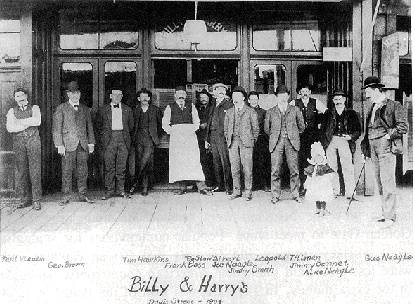Shanghaiing and its Abolition
Infamous "crimps" of 19th Century San Francisco.
Photo: San Francisco History Room, SF Public Library
The waterfront section of the Barbary Coast was generally considered the most dangerous day or night. Along the streets including Davis, Drumm, Front, Battery and what is now called the Embarcadero was where a hapless sailor was likely to be shanghaied. The term originated in San Francisco and refers to being taken forcibly aboard a ship about to make a long and hazardous cruise. There were no ships which make direct return voyages from Shanghai and one was forced to sail most of the way around the world. Shanghaiing was one of the most lucrative businesses on the Barbary Coast. The common practice was for runners who work for boarding houses to board a ship as it embarked in the harbor and persuade the sailors, by lies or often by force, to jump ship, hence forfeiting their pay. When sufficiently drunk on the bad liquor provided by the boarding house, they were forced to sign the articles of a new ship, usually turning over the first two month's pay to the boarding house proprietor. Frequently, the ship's captain was in league with the boarding house crimps.
One of the more famous crimps was a ferocious old woman called only Miss Piggot. She often boasted that she could fell an ox with one blow, and no one disputed her. Her favorite weapon was a bung-starter which she was said to wield with great dexterity. Her establishment on Davis Street was known for its trap door through which she frequently sent prospects to be shanghaied.
In 1906 Congress passed the Act to Prohibit Shanghaiing in the United States. This act along with the formation of the Seamen's Union and several other labor organizations finally brought to an end the practice of shanghaiing sailors from the Barbary Coast.
--Chris Carlsson

